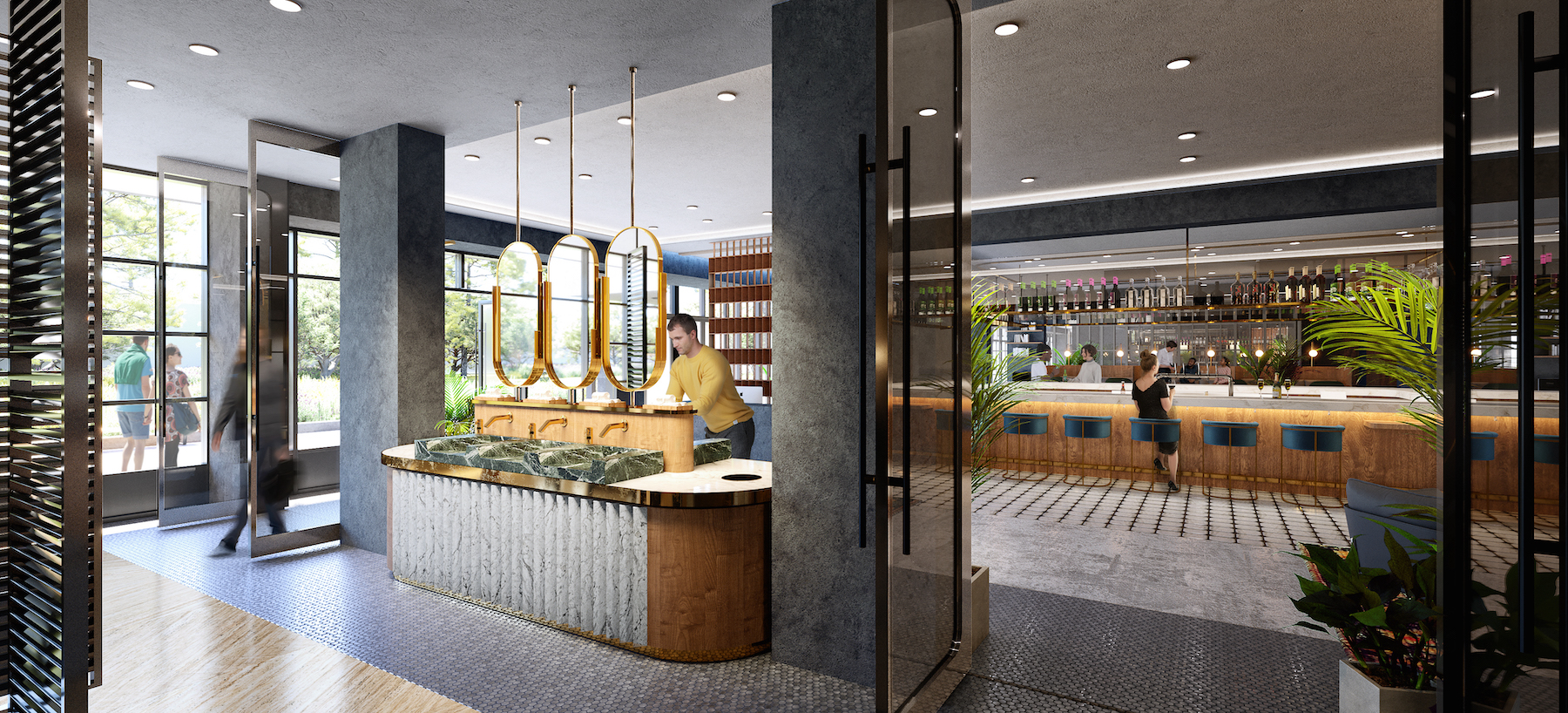Sloan, the world’s leading manufacturer of commercial plumbing systems, has launched its “Sinks Beyond the Restroom” concept. The innovation explores space modifications to integrate handwashing as a permanent part of design infrastructure in commercial spaces.
Working alongside a leading architectural firm, Sloan’s new concept addresses the public’s increased awareness of hand hygiene with a shift from hand sanitizing stations back to traditional handwashing.
“With society increasingly focused on hand hygiene, an opportunity exists to rethink hand sanitation with a return to the basics of soap and water by integrating handwashing into the public spaces we engage with in our daily routine,” said Kim Darke, Sloan Senior Manager of Strategic Accounts. “Sloan’s ‘Sinks Beyond the Restroom’ concept will help make this opportunity a reality across commercial applications of all types in an effort to promote increased handwashing.”
Sloan gathered dozens of experts across the country specializing in various markets to determine how to best implement this new concept across a wide range of applications, including:
- Office Buildings – Office lobbies present three critical moments where guests can benefit from a range of handwashing options as they enter and exit the building: directly adjacent to the entry, integrated with the reception desk, and the area adjacent to the elevators—an especially important area as it is near high-touch surfaces like elevator buttons.
- Public Transportation – Public handwashing stations in airports can provide useful travel information on monitors above the sink, listing flight departure and arrival information, digital airport maps, city highlights, and more.
- Retail & Hospitality – Restrooms are typically tucked away behind the bar of the kitchen in restaurants. Double-sided wash stations help bridge the space between the entry and lounge areas, as guests who check in with the host can then wash their hands while waiting for their table.
- Sports Stadiums – Sink stations throughout a stadium’s concourse deliver convenient and easy access opportunities for fans to wash their hands without waiting in long lines at halftime or during breaks. Integrated with digital screens, these sink stations can keep the entertainment going with team-themed media and count down a 20-second handwash.
- Schools – Implementing handwashing outlets throughout school corridors is a chance to reinforce learnings in the classroom through a series of fun and teachable moments that develop healthy lifelong habits. Educational possibilities include 20-second song lyrics to guide handwashing, plumbing and physics information, and historical quotes.
Sloan’s efforts to take hand hygiene outside the restroom began in 2020 with the launch of its Mobile Handwashing Stations, a touch-free innovation designed to be placed anywhere inside or outside buildings where hygiene is essential.
For more information on Sloan’s “Sinks Beyond the Restroom” concept, visit Sloan’s website. Follow Sloan on Facebook, Twitter, Instagram, and LinkedIn for additional updates.
Related Stories
| Feb 10, 2011
Moen M•Power electronic faucets
At 0.5 gpm, Moen’s M•Power electronic faucets meet the current standards, and offer features that eliminate waste. Improved electronic sensors reduce reflectivity to stop false sensing, and turn off automatically after 30 seconds. Electronics can be installed above or below deck to accommodate different sink styles.
| Jan 21, 2011
Virginia community college completes LEED Silver science building
The new 60,000-sf science building at John Tyler Community College in Midlothian, Va., just earned LEED Silver, the first facility in the Commonwealth’s community college system to earn this recognition. The facility, designed by Burt Hill with Gilbane Building Co. as construction manager, houses an entire floor of laboratory classrooms, plus a new library, student lounge, and bookstore.
| Dec 2, 2010
Alliance for Sustainable Built Environments adds Kohler's Robert Zimmerman to Board of Directors
Robert Zimmerman, Manager – Engineering, Water Conservation & Sustainability at Kohler Co., in Kohler, Wisconsin, has joined the Board of Directors of the Alliance for Sustainable Built Environments. In his position at Kohler Co., Rob is involved with all aspects of water conservation and sustainability related to plumbing fixtures and faucets.
| Nov 9, 2010
U.S. Army steps up requirements for greening building
Cool roofs, solar water heating, and advanced metering are among energy-efficiency elements that will have to be used in new permanent Army buildings in the U.S. and abroad starting in FY 2013. Designs for new construction and major renovations will incorporate sustainable design and development principles contained in ASHRAE 189.1.
| Nov 3, 2010
Park’s green education center a lesson in sustainability
The new Cantigny Outdoor Education Center, located within the 500-acre Cantigny Park in Wheaton, Ill., earned LEED Silver. Designed by DLA Architects, the 3,100-sf multipurpose center will serve patrons of the park’s golf courses, museums, and display garden, one of the largest such gardens in the Midwest.
| Nov 3, 2010
Public works complex gets eco-friendly addition
The renovation and expansion of the public works operations facility in Wilmette, Ill., including a 5,000-sf addition that houses administrative and engineering offices, locker rooms, and a lunch room/meeting room, is seeking LEED Gold certification.
| Nov 3, 2010
Sailing center sets course for energy efficiency, sustainability
The Milwaukee (Wis.) Community Sailing Center’s new facility on Lake Michigan counts a geothermal heating and cooling system among its sustainable features. The facility was designed for the nonprofit instructional sailing organization with energy efficiency and low operating costs in mind.
| Nov 3, 2010
Senior housing will be affordable, sustainable
Horizons at Morgan Hill, a 49-unit affordable senior housing community in Morgan Hill, Calif., was designed by KTGY Group and developed by Urban Housing Communities. The $21.2 million, three-story building will offer 36 one-bed/bath units (773 sf) and 13 two-bed/bath units (1,025 sf) on a 2.6-acre site.
| Nov 3, 2010
Virginia biofuel research center moving along
The Sustainable Energy Technology Center has broken ground in October on the Danville, Va., campus of the Institute for Advanced Learning and Research. The 25,000-sf facility will be used to develop enhanced bio-based fuels, and will house research laboratories, support labs, graduate student research space, and faculty offices. Rainwater harvesting, a vegetated roof, low-VOC and recycled materials, photovoltaic panels, high-efficiency plumbing fixtures and water-saving systems, and LED light fixtures will be deployed. Dewberry served as lead architect, with Lord Aeck & Sargent serving as laboratory designer and sustainability consultant. Perigon Engineering consulted on high-bay process labs. New Atlantic Contracting is building the facility.
| Nov 1, 2010
Vancouver’s former Olympic Village shoots for Gold
The first tenants of the Millennium Water development in Vancouver, B.C., were Olympic athletes competing in the 2010 Winter Games. Now the former Olympic Village, located on a 17-acre brownfield site, is being transformed into a residential neighborhood targeting LEED ND Gold. The buildings are expected to consume 30-70% less energy than comparable structures.















